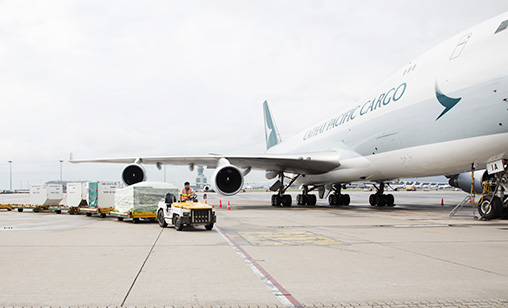News Backgrounder
Distributing a COVID-19 vaccine air cargo industry’s greatest challenge
Dealing with a pandemic is bad enough. Now airlines have been told in no uncertain terms they will face a huge challenge in distributing the COVID-19 vaccine after it is developed. Associate editor and chief correspondent, Tom Ballantyne, reports.
October 1st 2020
The International Air Transport Association’s global head of cargo, Glyn Hughes, does not mince words when he is describing the importance the airline industry must place on preparing for the distribution of a COVID-19 vaccine to 7.8 billion people worldwide. Read More »
Just when that will be remains a matter of conjecture, but if scientists soon produce a coronavirus vaccine, transporting it to where it’s needed will be one of the greatest challenges air freight has faced.
 |
The capabilities of the aircraft itself are not the only problem. “The vaccine will have to be stored at correct temperatures as it moves from the production source to the airport and then from the aircraft to distribution centres and onto medical facilities delivering the inoculations,” Hughes said.
“We know the procedures well. We need to scale them up to the magnitude that will be required.” IATA is working with airlines, airports, global health bodies and pharmaceutical firms to pull together plans for a distribution program, calling it the industry’s “largest single transport challenge ever”, he said.
There are as many as 250 different vaccine programs under development, said Hughes, citing the World Health Organization. Governments have invested billions of dollars to develop a vaccine at an accelerated pace and eleven possibilities are understood to be in late-stage trials. But while U.S. President Donald Trump has been touting the arrival of a vaccine as early as this month or by November, most experts suggested a more realistic estimate was mid-2021.
IATA has launched ONE Source, an online platform to help the air cargo industry match shipping needs with the infrastructure capabilities of cargo for pharmaceuticals and also certifications of service providers in the value chain.
 |
“This is particularly timely amid the COVID-19 crisis when shippers of medical supplies and pharmaceuticals need accurate information for time-and temperature sensitive shipments,” explained the airline body. “ONE Source lists the latest operational information about airlines, airports, cargo handling facilities, freight forwarders, ground handlers, shippers, and trucking companies. All critical information contained on ONE Source has been verified by IATA for accuracy. IATA ONE Source is free for all service providers across the air cargo supply chain,” IATA said.
Hughes said air cargo has been essential in the global fight against COVID-19, transporting vital equipment and medicines to those who need them most. “However, with over 3,500 differently sized cargo handling facilities worldwide, until now the industry has lacked visibility about the capacities and services these facilities offer,” he said. “The need for greater transparency is even more critical in the current context.”
Even with military precision planning, Hughes said flights to Africa, Latin America and parts of Southeast Asia, which lack vaccine production capabilities, will be especially challenging.
Developing markets rely almost wholly on cargo carried in the bellies of passenger planes, many of which remain grounded from the COVID-19 plague. For example, Hughes said, distributing a vaccine in Africa would be “impossible” now, given a lack of capacity combined with the size of the region, its thin surface transport infrastructure and the complexities of border crossings.